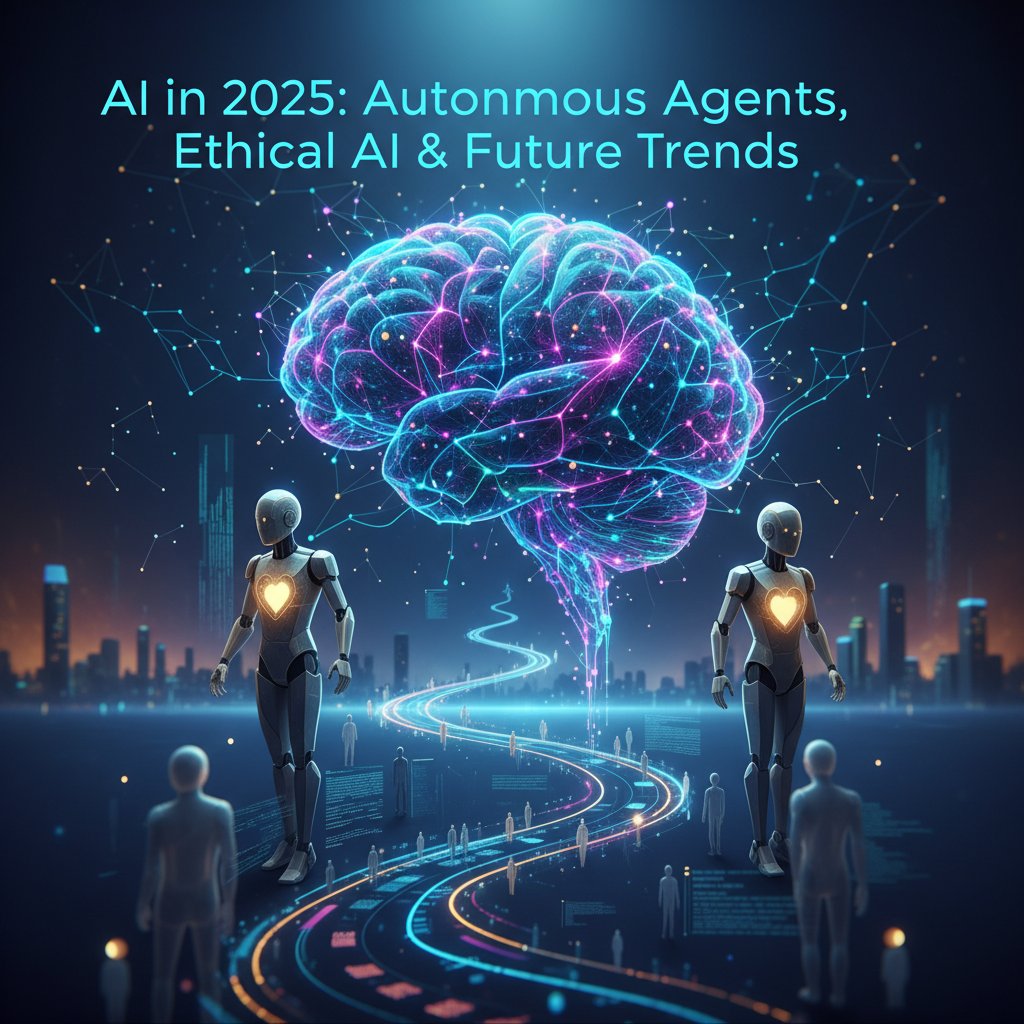As we progress through 2025, artificial intelligence has transitioned from experimental technology to a transformative force reshaping industries worldwide. This comprehensive report examines the current state of AI, highlighting key developments, emerging trends, and what lies ahead for businesses and society.
- The Industrial Era of AI Has Arrived
- The Rise of AI Agents: Apps of the AI Era
- Reasoning Models Define the Year
- Global AI Leadership and Competition
- Infrastructure and Power: The New Constraint
- Industry-Specific Transformations
- Key Trends to Watch
- Challenges and Concerns
- The High Performers: What Sets Them Apart
- Looking Ahead: The Second Half of 2025
- Conclusion: Navigating the AI Transformation
The Industrial Era of AI Has Arrived
The most significant shift in 2025 is the mainstream adoption of AI tools across industries. Recent survey data reveals that 95% of professionals now use AI at work or at home, with 76% paying for AI tools out of their own pockets. This marks a dramatic evolution from just two years ago when only 5% of U.S. businesses paid for AI tools—today, that number has surged to 44%.
According to McKinsey’s latest research, nearly 65% of organizations are regularly using generative AI in their business operations, nearly doubling the percentage from 2023. Average AI contracts have reached $530,000, and AI-first startups are growing 1.5 times faster than their peers, signaling that the commercial viability of AI has been firmly established.
The Rise of AI Agents: Apps of the AI Era
One of the most transformative developments in 2025 is the emergence of AI agents—autonomous systems capable of handling complex, multi-step tasks with minimal human intervention. Industry experts describe agents as “the apps of the AI era,” and their adoption is accelerating rapidly.
AI agent usage is most commonly reported in:
IT and Knowledge Management: Service desk management and deep research applications have quickly developed, with workers at nearly 70% of Fortune 500 companies now using AI assistants like Microsoft 365 Copilot to handle repetitive tasks.
Healthcare: AI agents are assisting with administrative tasks such as nurse handoffs, clinical documentation, and claims processing, freeing up staff for patient care and higher-value activities.
Financial Services: Organizations are implementing AI agents for tasks like market research, generating summaries in specific templates, and providing 24/7 support for coverage queries and claim statuses.
Reasoning Models Define the Year
A breakthrough development in 2025 has been the advancement of reasoning models. Frontier labs have combined reinforcement learning, rubric-based rewards, and verifiable reasoning to create models that can plan, reflect, self-correct, and work over increasingly long time horizons.
This has profound implications across multiple domains. AI is becoming a scientific collaborator, with systems like DeepMind’s Co-Scientist and Stanford’s Virtual Lab autonomously generating, testing, and validating hypotheses. In biology, scaling laws are now being applied to proteins, opening new frontiers in drug development and materials science.
Global AI Leadership and Competition
The geopolitical landscape of AI development is evolving rapidly. In 2024, U.S.-based institutions produced 40 notable AI models, significantly outpacing China’s 15 and Europe’s three. However, the quality gap is closing fast—performance differences on major benchmarks shrank from double digits in 2023 to near parity in 2024.
China continues to lead in AI publications and patents, while model development is becoming increasingly global, with notable launches from the Middle East, Latin America, and Southeast Asia. The entrance of cost-effective competitors like DeepSeek, which claimed to train a competitive large language model for just $6 million, has disrupted assumptions about the economics of AI development.
Infrastructure and Power: The New Constraint
Multi-gigawatt data centers signal a new wave of compute infrastructure backed by sovereign funds from the U.S., UAE, and China. However, power supply has emerged as the critical bottleneck. Despite gains in energy efficiency, overall power consumption continues to rise, giving AI data centers an enormous carbon footprint.
On the positive side, hardware costs are declining, performance is increasing, and energy efficiency is improving. Inference costs—the expense of querying a trained model—have fallen dramatically, from $20 per million tokens to just $0.07 per million tokens in less than a year.
Industry-Specific Transformations
Marketing and Sales
Revenue increases from AI use are most commonly reported in marketing and sales functions. Organizations are leveraging AI for personalized customer experiences, targeted outreach, and automated customer service that operates 24/7.
Retail
Retailers are moving beyond early experiments to implement AI at scale. The focus has shifted from wholesale function replacement to incremental productivity improvements, with AI tools helping existing resources accomplish more.
Healthcare
Healthcare providers are experiencing surge in AI adoption for clinical operations, back-office tasks, and patient communications. AI is accelerating drug development, with tools that can learn to interpret medical images using only a fraction of the data traditionally required.
Financial Services
Financial institutions are taking a more holistic approach to AI integration, recognizing that effective implementation requires understanding how AI accelerates and integrates into day-to-day workflows rather than attempting wholesale replacement.
Key Trends to Watch
1. Multimodal AI Capabilities
Organizations are capitalizing on AI systems that can process and generate multiple types of content—text, images, video, and audio—enabling more sophisticated applications and user experiences.
2. Conversational AI Evolution
The chatbot market is estimated to reach $27.2 million by 2030. Advanced conversational AI is handling increasingly complex queries, automating repetitive tasks, and enhancing customer experiences across industries.
3. AI in Scientific Discovery
AI systems are now autonomously generating, testing, and validating scientific hypotheses, accelerating breakthroughs in drug development, materials science, and other research-intensive fields.
4. Workforce Transformation
Organizations are investing heavily in AI literacy programs. UK retailer Debenhams launched a £1.35 million AI Skills Academy to train over 1,000 staff, reflecting a growing trend of workforce AI-readiness initiatives.
5. Defense and Security Applications
Defense-tech companies are capitalizing on classified military data to train AI models. Major AI companies, including OpenAI, Microsoft, Amazon, and Google, are increasingly partnering with the Pentagon, with defense contracts offering lucrative revenue streams.
Challenges and Concerns
Safety and Responsible AI
AI-related incidents are rising sharply, yet standardized responsible AI evaluations remain rare among major model developers. However, new benchmarks like HELM Safety, AIR-Bench, and FACTS offer promising tools for assessing factuality and safety. A significant gap persists between recognizing AI risks and taking meaningful action.
Deepfake Detection
Scientists have developed universal AI detectors that can identify deepfake videos with 98% accuracy across platforms, addressing growing concerns about misinformation and protecting public trust. These tools are being evaluated for deployment in media and law enforcement.
Economic and Employment Impact
As AI automates more tasks, questions arise about workforce displacement. In higher education, AI-generated syllabi, automated grading, and AI-created lectures are raising ethical questions about academic labor and the future of teaching roles.
The High Performers: What Sets Them Apart
Organizations achieving significant business impact from AI—defined as those attributing 5% or more EBIT impact to AI use—share common characteristics. These high performers, representing about 6% of survey respondents, are:
Thinking Transformatively: They’re more than three times more likely to pursue transformative innovation via AI rather than incremental improvements.
Redesigning Workflows: High performers are nearly three times as likely to fundamentally redesign individual workflows, which has one of the strongest contributions to achieving meaningful business impact.
Scaling Faster: They implement AI across multiple business functions rather than limiting deployment to isolated use cases.
Investing More: High performers commit greater resources to AI initiatives and supporting infrastructure.
Looking Ahead: The Second Half of 2025
Several developments are expected to accelerate in the coming months:
Agent Autonomy: AI agents will handle increasingly complex assignments with enhanced memory, reasoning, and multimodal capabilities, revolutionizing business processes across industries.
Personal AI Companions: AI assistants like Microsoft Copilot will become more integrated into daily life, helping users prioritize tasks, summarize information, and stay connected while safeguarding privacy and security.
Benchmark Evolution: As current AI benchmarks become saturated, new standardized measures will emerge to facilitate meaningful comparisons and drive continued innovation.
Regulatory Developments: AI politics continue to evolve, with the U.S. leaning into “America-first AI,” Europe’s AI Act facing implementation challenges, and China expanding its open-weights ecosystem.
Conclusion: Navigating the AI Transformation
The state of AI in 2025 reflects a technology that has moved decisively from promise to practice. Organizations that successfully navigate this transformation share common traits: they think big, redesign workflows intentionally, scale systematically, and invest adequately in both technology and people.
The industrial era of AI has begun, bringing both unprecedented opportunities and complex challenges. As AI systems become more capable and autonomous, the need for thoughtful implementation, robust safety measures, and continuous workforce development has never been greater.
For businesses, the message is clear: AI adoption is no longer optional for maintaining competitive advantage. The gap between early adopters and laggards is widening, with AI-first companies demonstrating measurably superior growth and efficiency.
As we progress through 2025, AI will continue to drive innovation and unlock new potential across virtually every sector of the economy. The organizations that thrive will be those that embrace AI not as a replacement for human capability, but as a powerful tool for augmenting human potential and solving increasingly complex challenges.
This report synthesizes data from multiple authoritative sources including McKinsey’s State of AI Report, Stanford’s AI Index, State of AI Report 2025, and industry analyses from leading technology companies and research institutions.










